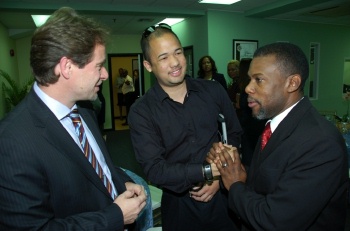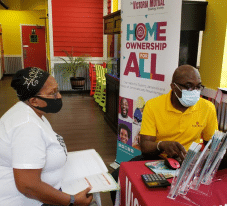‘QUAKE: Haiti in Jamaica’ Documentary Spurs Response In Jamaica and Caribbean
KINGSTON, Jamaica – The documentary ‘QUAKE: Haiti in Jamaica’, is spurring high levels of interest in the vulnerabilities to natural disasters both locally and across the Caribbean region, says Producer Bob Harris
Released to coincide with the anniversary of the earthquake which struck Haiti on January 12, 2010, the documentary which was funded by NEM Insurance Company (Ja.) Ltd, has been aired across the Caribbean; and, was subsequently mounted on YouTube, on JNBS-TV, to ensure its widest possible dissemination. The result has been a flurry of calls to the Producer and others associated with the documentary.
“Many persons and institutions are expressing concern about the vulnerability of life and property to the impact of a major earthquake,” Mr. Harris stated, in discussing the common theme of the many calls he received. There is also consideration for associated factors, such as landslides, liquefaction and tsunamis.
One call about the documentary was from a resident of an upscale St. Andrew community in Jamaica, who did not realise that the suburban area in which he lives lies atop a geological fault line. Another call was from a downtown Kingston institution, located close to the waterfront, while a third came from a supplier of emergency equipment keen on getting a better appreciation of the risks its customers faced.
From across the region, the responses focused on the need for similar assessments of catastrophe preparedness, to that shown in the Jamaican-based documentary. Mr. Harris said that a caller from Antigua was concerned about their own risk levels to a similar event. A resident of Montserrat wanted to know whether a documentary could be made about the threat from the volcano on their island; and in Barbados, the worry was regarding sink-holes, as a home was recently engulfed by one, killing an entire family.
Data on the YouTube viewership through the JNBStv channel shows that most has come from Jamaica, followed by Guyana, the United States, Canada and France.
“My goal in developing the documentary was not simply to create a momentary stir,” Mr. Harris said. “It was aimed at getting more people to pay keen attention to where they build, and to prepare for the eventuality of a catastrophe as one event resulting from a natural hazard has the potential to do more harm than any violent outbreak. We all need to pay attention to, and support research and public education on these issues.”
Tapping on the expertise of Dr. Parris Lyew-Ayee, Director of Mona GeoInformatics, and Dr. Lyndon Brown, Head of the Earthquake Unit at The University of the West Indies Mona, the documentary examines how an earthquake emanating a few kilometers west along the same fault as that of the January 12, 2010 earthquake in Haiti, might impact Jamaica.

Ronald Jackson (right), Director General of the Office of Disaster Preparedness and Emergency Management, clasps hands with Dr. Parris Lyew-Ayee, Director of Mona GeoInformatics while also holding the attention of Chris Hind, General Manager, NEM Insurance Co. Jamaica Ltd., at the premiere of the documentary ‘QUAKE: Haiti in Jamaica’.
“The entire island would feel the earthquake,” Dr. Lyew-Ayee told the audience at the first public viewing of the documentary, at the Office of Disaster Preparedness and Emergency Management in New Kingston on January 11. A risk model developed by Mona GeoInformatics and the Earthquake Unit for NEM showed that the impact over 75 percent of the island would be sufficient to cause some structural damage with certain areas subject to particular risks.
“We commissioned the risk model to ensure that our reinsurance programme and our capital were sufficient to withstand ‘Quake: Haiti in Jamaica’ if it came to pass,” Chris Hind, General Manager of NEM told the audience.
The study showed that NEM was properly reinsured; however, it also indicated that the consequences for Jamaica would be sufficiently serious that the company decided to support the television documentary for public broadcast.
“Far too often, we don’t pay attention to the need for insurance and investment in infrastructure hardening to ensure that we can survive such events,” stated Ronald Jackson, Director General of ODPEM. He maintained that, “What is important for us to focus on is risk mitigation and prevention.”



